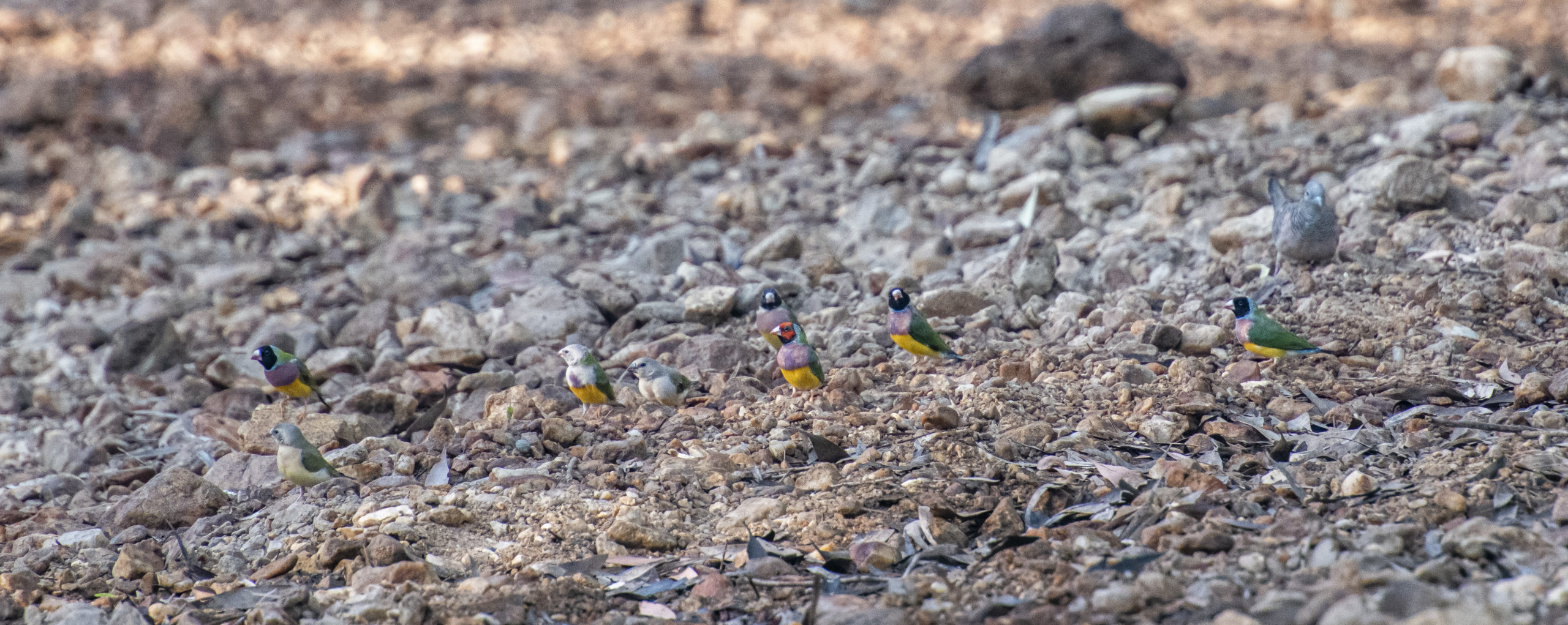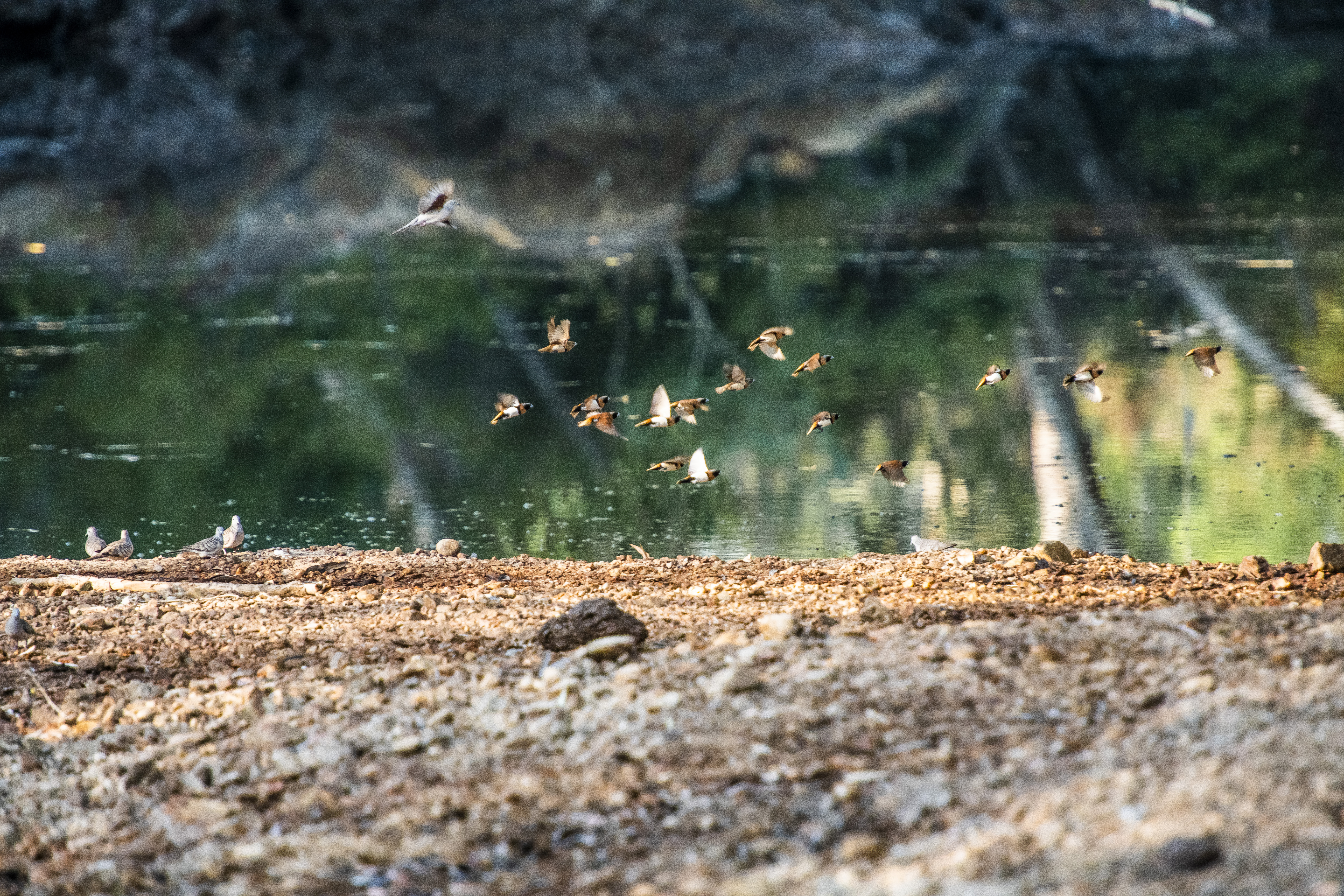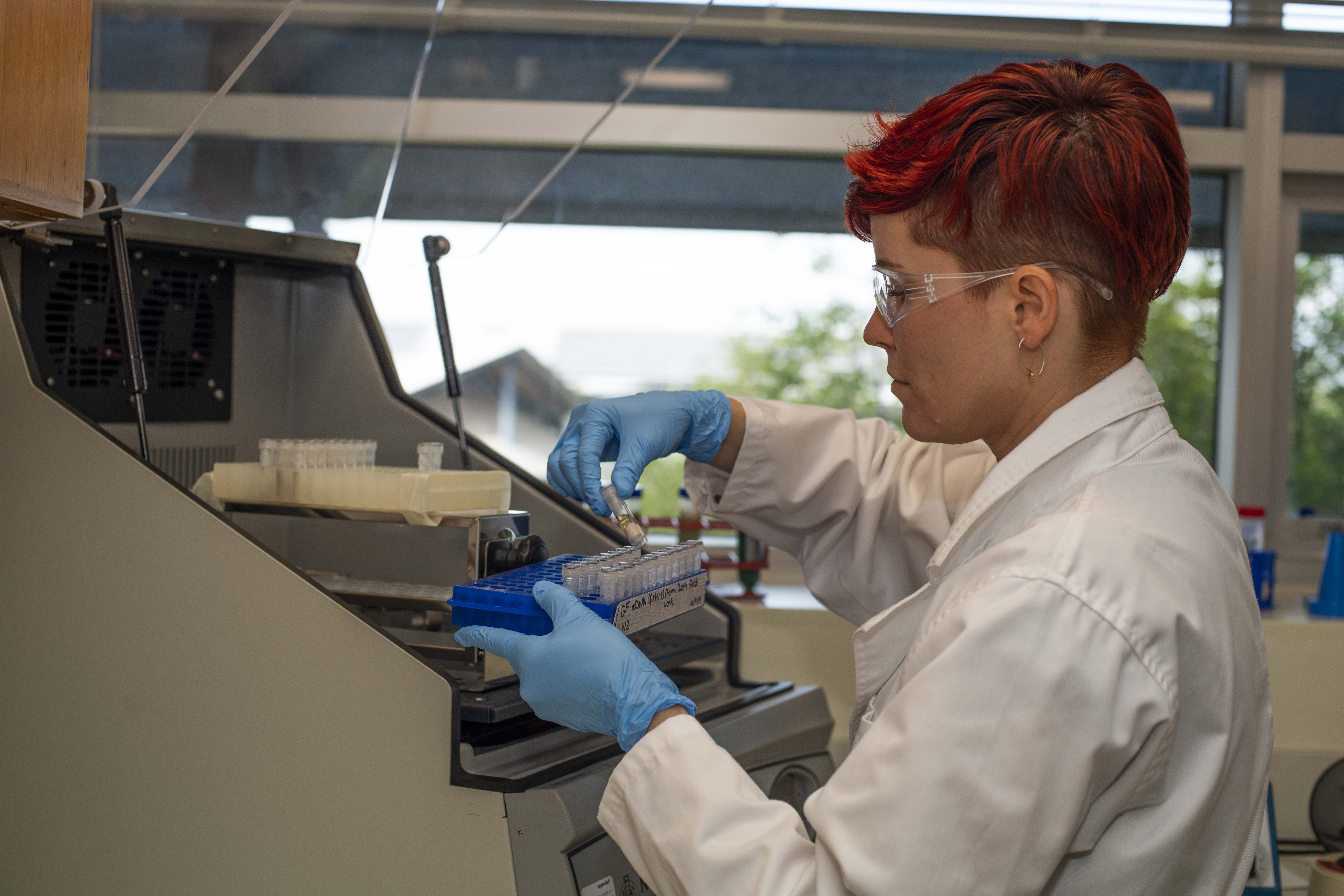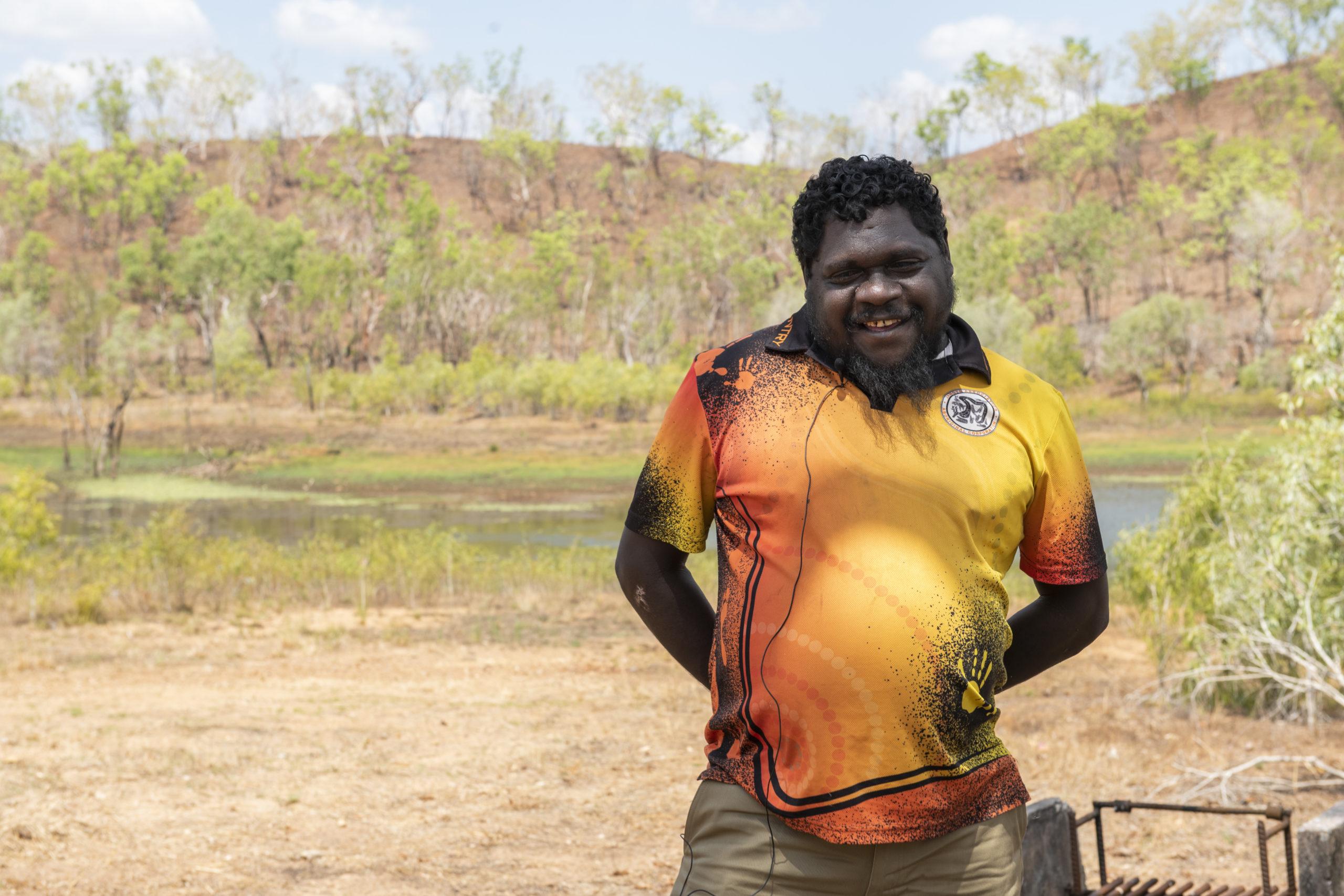It’s one of the great conundrums of conservation management: often the animal species of most concern are the most difficult and time-consuming to find.
Some of these species are rare, while others are cryptic, hiding high in the canopy or deep in their burrows. Some are highly mobile, never staying in one place for too long. Others avoid the traps traditionally used by scientists to monitor animal populations.
Often you need to go out and do an enormous amount of sampling – a lot of sites, a lot of time – in order to get enough detections of a species to have any scientifically robust idea of what’s happening. We’re always looking for tools which will allow us to sample those species or particular groups of species more efficiently.
– Dr Alaric Fisher, Executive Director, Flora and Fauna Division within the Northern Territory Department of Environment, Parks and Water Security (DEPWS)

Gouldian Finches are one of many species that are difficult to detect due to their movement patterns through the landscape. Photo by NESP Northern Hub.
Banner photo: Gouldian Finch group drinking, Wyndham, Kimberley, Western Australia, Australia. Photo by Minden Pictures/Alamy Stock Photo.
Research funded by the Australian Government’s National Environmental Science Program (NESP) has developed a potentially breakthrough tool for one species: a test that detects the environmental DNA (eDNA) of the Gouldian finch (Erythrura gouldiae) in water collected from the small pools where they cluster to drink. It is the first time that an eDNA test has been successfully used to detect a threatened bird species.
The test shows a lot of promise.
– Dr Alaric Fisher
Despite their rainbow colouring, Gouldian finches are difficult to find. They are highly mobile and sparsely scattered across the landscape, often occurring in mixed flocks with other seed-eating birds. But, as a listed threatened species, the impact on Gouldian finches and their habitat must be considered in proposals for new developments.

Gouldians often drink at waterholes with other finch species, which made them a challenging candidate to develop an eDNA test for. Photo by NESP Northern Hub.
DEPWS will use the eDNA test as part of their regional surveys that provide baseline information for proposed development activities.
The eDNA test was developed and validated through a collaboration between Charles Darwin University (CDU), the University of Western Australia (UWA), DEPWS and Jawoyn Rangers. Dr Fisher says the project exemplified the power of NESP research to foster partnerships between organisations whose expertise ranged from genome sequencing to operational bird surveys to Indigenous knowledge of country.
The research was led by CDU Professor Karen Gibb. UWA Professor Simon Jarman and his team designed the two-in-one quantitative polymerase chain reaction (qPCR) test that recognises and makes multiple copies of a specific region of mitochondrial DNA found in estrildid finches and a species-specific probe to detect Gouldian finch DNA.

Charles Darwin University researcher Dr Alea Rose processes the eDNA samples in the laboratory. Photo by NESP Northern Hub.
Researchers at CDU then further developed the eDNA test in the lab before trialling it in aviaries at the Territory Wildlife Park. The final hurdle was validating the eDNA test under field conditions. In late 2018, researchers from DEPWS and Jawoyn Rangers collected water samples from Yinberrie Hills, where Gouldian finches have been monitored since 1996. This data allowed Dr Alea Rose to validate the eDNA detected in water samples against concurrent observations of the finches drinking.
Jawoyn Ranger Mike Allangale says he enjoyed the early mornings waiting with binoculars, pen and paper for the finches to come to the waterholes to drink. The rangers were trained in bird survey techniques and the stringent water sampling protocols required for eDNA analysis.
Jawoyn Rangers plan to use the eDNA test as part of their collaborative monitoring with DEPWS to show how their program of early season burning is benefitting the recovery of Gouldian finches.
That’s why we do fire management early, because if it’s going to be after August – that’s a late fire – it’ll probably damage sites and there’ll be no finches around.
– Mr Mike Allangale, Jawoyn Ranger

Jawoyn Ranger Mike Allangale was part of the research and wants to see the use of eDNA become a regular part of their work. Photo by NESP Northern Hub.
Research outputs
Scientific paper
News release and articles
Report
Factsheets
Video
Project webpage
Attributions


![]()